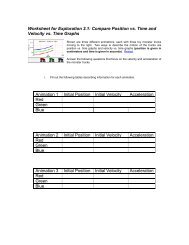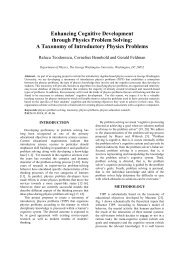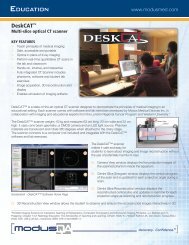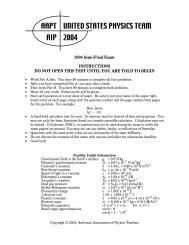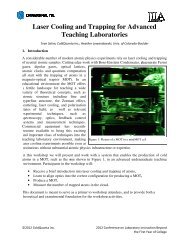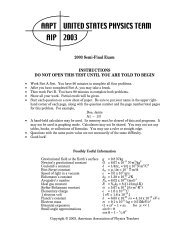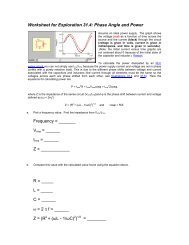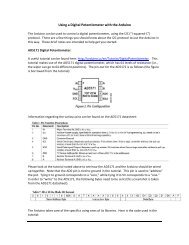Download the Workshop Document - comPADRE
Download the Workshop Document - comPADRE
Download the Workshop Document - comPADRE
- No tags were found...
Create successful ePaper yourself
Turn your PDF publications into a flip-book with our unique Google optimized e-Paper software.
e) To see <strong>the</strong> result, remove <strong>the</strong> 100 mm lens in <strong>the</strong> outgoing beam path. We use a blankslide immediately after <strong>the</strong> spatial filter slide to be able to go back and forth betweenfiltered and unfiltered image in PowerPoint.f) A few notes: at 633 nm (red He‐Ne), <strong>the</strong> SLM can only delay <strong>the</strong> phase by 0.8 ,resulting in an imperfect amplitude aperture. Shifting to green (543 nm He‐Ne or 532nm DPSS) allows <strong>the</strong> phase delay to be increased to closer to (0.95 at 532 nm). Thismay help improve <strong>the</strong> aperture filtering. O<strong>the</strong>r fun filters include a low‐pass filter(simply a small white circle on a black background – this removes <strong>the</strong> high‐frequencyinformation, resulting in a blurred image; a high‐pass filter (small black circle on a whitebackground), which removes <strong>the</strong> DC component (that is, <strong>the</strong> mean intensity), whichtends to make dark regions bright and vice versa; and a “razor‐blade” filter, with twolarge black rectangles surrounding a narrow white slit – using this and a square‐gridobject allows ei<strong>the</strong>r <strong>the</strong> horizontal or vertical lines of <strong>the</strong> grid to be removed (in fact, afilter with actual razor blades in <strong>the</strong> transform plane, no SLM, works fantastically for thisspatial filter).Doug Martindouglas.s.martin@lawrence.eduShannon O’Learysoleary@lclark.edu



